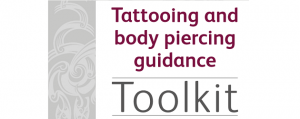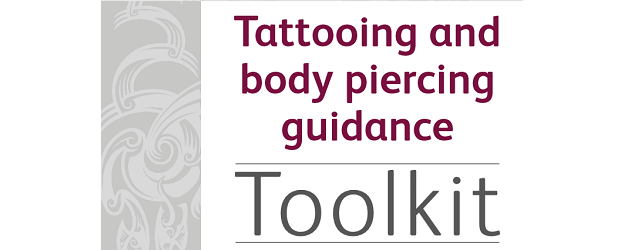A new Tattooing and body piercing guidance toolkit has been launched. This new guidance will provide local authorities and businesses with information on good standards of practice, and promote safety and consistency across the industry nationally.
 |
| [relatedPosts title=”Related Posts”] |
|
|
As tattooing and body piercing becomes more common, improper or unsanitary methods used in these procedures can carry health risks. These short and long term health risks include infections, in particular the risk of transmission of blood-borne viruses like hepatitis B, C and HIV.
The guidance was developed by experienced individuals working with the tattoo and body piercing industry as expert advisors, practitioners or regulators, and has been endorsed by the Chartered Institute of Environmental Health (CIEH), Public Health England (PHE), the Health and Safety Laboratory (HSL), and the Tattoo and Piercing Industry Union (TPIU).
Currently there are no national standards to reduce health risks and so there is a need to promote safety and consistency across the range of tattooing and body piercing practices, as health risks can arise from improper practice.
Dr Paul Cosford, Director for Health Protection and Medical Director for PHE, said:
This guidance toolkit ensures practitioners follow safe and hygienic working practices to protect the health of both clients and themselves.
Public Health England worked closely with the Chartered Institute of Environmental Health and provided evidence on decontamination and infection control to help develop the recommendations.
This guidance aims to promote evidence based infection prevention and control practice to improve and monitor standards in tattooing and body piercing. The importance of this guidance for the industry has been recognised by many health professionals and practitioners alike, and I am delighted to support and endorse this toolkit.
There are currently no requirements for professional competence and no nationally recognised or accredited training courses for tattooing and body piercing.
Ian Gray, Principal Policy Officer for CIEH, said:
The use of this guidance toolkit will help to ensure the health and safety of both clients and operators and that tattooing and skin piercing practitioners will be operating in compliance with legal requirements.
By making this toolkit available to both businesses and the local authority officers responsible for the regulation of their activities, we are creating a level playing field to promote agreement on requirements and consistency in their application which will encourage compliance and provide reassurance for the clients who wish to undergo these procedures.
The guidance has been written for use nationally by tattoo and body piercing practitioners who work in regulated premises, local authority officers in their regulatory role and health protection staff who are asked to provide expert advice.
This guidance is open for review over the next six months (to 8 February, 2014). Health and industry professionals are encouraged to contact Ian Gray, CIEH Principal Policy Officer on i.gray@cieh.org to share their views.
The ‘Tattooing and body piercing guidance toolkit’ is available here.





